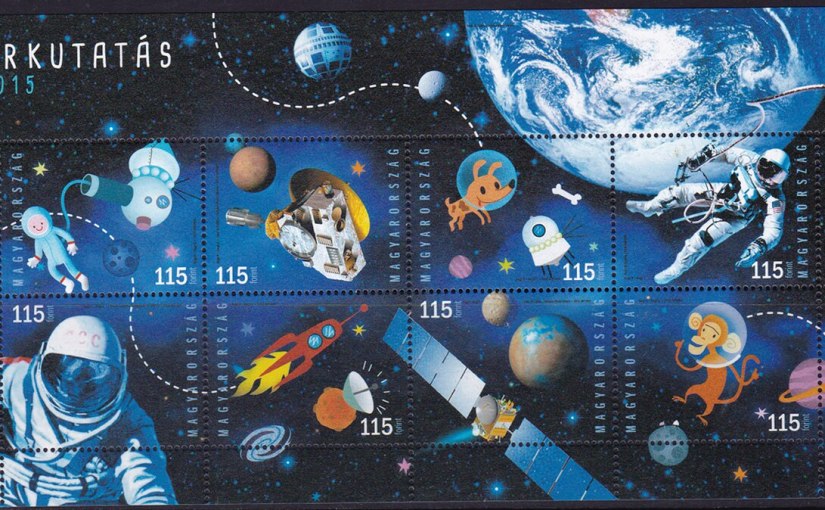Trans-Indigenous Science Fictions
Trans-Indigenous Science Fictions: Imagining Beyond Settler Colonialism
The Editorial Collective
Indigenous peoples, and indigeneity in general, have always been central to sf. As scholar John Rieder has argued, a colonial ideology and colonial history are endemic to sf, shaping the genre since its inception. Indeed, the history of exploration and settlement seem central to common notions of the genre, especially in Western texts. Yet it is precisely this way of considering the relationship between indigeneity and sf—a Euro-American approach—that continually relegates Indigenous peoples to the “primitive.” According to Grace Dillon (Anishinaabe), “Indigenous sf is not so new,” and the relationship between indigeneity and science fiction is one where material effects are felt in both directions. She writes, “Writers of Indigenous futurisms sometimes intentionally experiment with, sometimes intentionally dislodge, sometimes merely accompany, but invariably change the parameters of sf” whether in the ruined return of boarding school ideologies in Cherie Dimaline’s (Métis) The Marrow Thieves to the metaphorical, interspecies re-telling of colonization in Claire G. Coleman’s (Noongar) Terra Nullius. A futuristic outlook is embedded within Indigenous decolonial thinking, which encourages seeing past the confines of settler colonial ideologies. Scholarship in the past twenty years has taken up exploring the way Indigenous sf “changes the parameters of sf.” It is this conversation this special section for an issue of the SFRA Review looks to continue and expand upon.
This special section will examine the depths of not just Indigenous sf, but Trans-Indigenous sf. Trans-Indigenous scholarship, as introduced by literary scholar Chadwick Allen (Chickasaw), works to think across and juxtapose Indigenous texts. As Allen argues, “My goal in staging purposeful Indigenous juxtapositions is to develop a version of Indigenous literary studies that locates itself firmly in the specificity of the Indigenous local while remaining always cognizant of the complexity of the relevant Indigenous global.” Indigenous sf is rooted in particular places and particular communities that must be considered, even while we acknowledge the often inter-tribal, global, inter-planetary, or cosmic messages at the heart of these works. From foundational novels like Darkness in St. Louis Bearheart by Gerald Vizenor (Anishinaabe) to more contemporary works by Cherie Dimaline (Métis), Daniel H. Wilson (Cherokee), and Blake Hausman (Cherokee) and through video games, films, comics, and multimedia artworks by Elizabeth LaPensée (Anishinabee/Métis), Cole Pauls (Southern Tutchone), and Skawennati (Mohawk) Indigenous sf is not only expanding into the future but drawing from communal and ancestral pasts. It is in the spirit of this long-running communal, global, and cosmic tradition that we are inviting abstracts relating, but certainly not limited, to the following areas and topics:
- Activism
- Art/art history
- Comics/Graphic Novels
- Decolonization
- Gaming and/or digital narratives
- Indigenous futurisms
- Indigenous scientific knowledges
- Indigenous slipstream (time travel and alternative futures/realities)
- Landback (contemporary activist movement for reclamation)
- Languages and revitalization
- Media Culture
- Posthumanism
- Sf contact narratives, particularly from an Indigenous perspective
- Specific Indigenous sf authors or texts
- Teaching/Education
- Two-Spirit/LGBTQ texts
- Treaties
- Water protection
This issue will also feature a special response essay by Grace Dillon (Anishinaabe), Professor of Indigenous Nations Studies at Portland State University and editor of the collection Walking the Clouds: An Anthology of Indigenous Science Fiction.
Please send your abstracts (250-300 words) describing your provisional 3000-4000-word essay accompanied by a brief bio (50-100 words) to jeremy.carnes@ucf.edu by 20 June 2021. Authors will be notified within 2 weeks and first drafts of selected papers (prepared in MLA Style with a Works Cited in MLA 8th Edition) will be expected by 31 August. Essays will be published in a special section in the Autumn (November) 2021 issue of the Review.
If you have any questions regarding this project, please reach out to guest editor Jeremy M. Carnes at the email address above.



